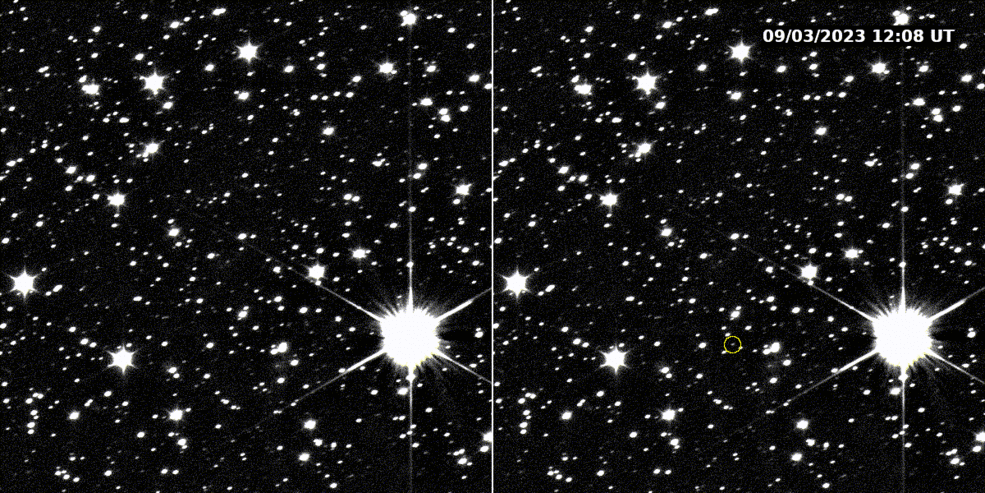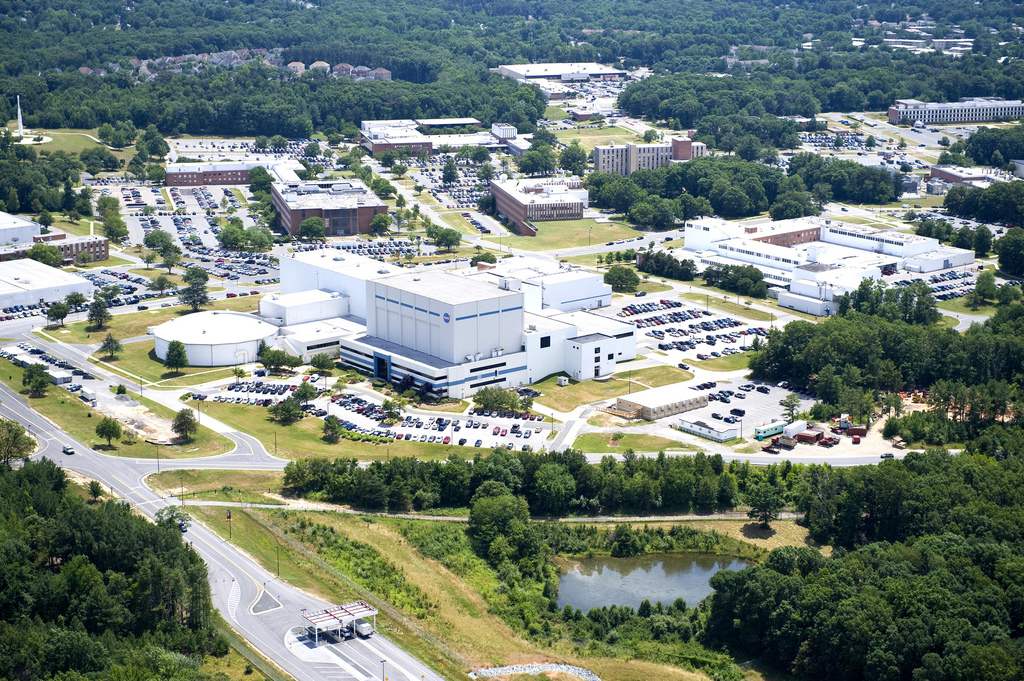The small dot moving against the background of stars is the first view from NASA’s Lucy spacecraft of the main belt asteroid Dinkinesh, the first of 10 asteroids that the spacecraft will visit on its 12-year voyage of discovery. Lucy captured these two images on Sept. 2 and 5, 2023. On the left, the image blinks between these first two images of Dinkinesh. On the right, the asteroid is circled to aid the eye.
Lucy took these images while it was 14 million miles (23 million km) away from the asteroid, which is only about a half-mile wide (1 km). Over the next two months, Lucy will continue toward Dinkinesh until its closest approach of 265 miles (425 km) on Nov. 1, 2023. The Lucy team will use this encounter as an opportunity to test out spacecraft systems and procedures, focusing on the spacecraft’s terminal tracking system, designed to keep the asteroid within the instruments’ fields of view as the spacecraft flies by at 10,000 mph (4.5 km/s). Lucy will continue to image the asteroid over the next months as part of its optical navigation program, which uses the asteroid’s apparent position against the star background to determine the relative position of Lucy and Dinkinesh to ensure an accurate flyby. Dinkinesh will remain an unresolved point of light during the long approach and won’t start to show surface detail until the day of the encounter.
The brightest star in this field of view is HD 34258, a 7.6 magnitude star in the constellation Auriga that is too dim to be seen by the naked eye from Earth. At this distance, Dinkinesh is only 19 magnitude, about 150,000 times fainter than that star. Celestial north is to the right of the frame, which is about 74,500 miles across (120,000 km). The observations were made by Lucy’s high-resolution camera, the L’LORRI instrument – short for Lucy LOng Range Reconnaissance Imager – provided by the Johns Hopkins Applied Physics Laboratory in Laurel, Maryland.
Lucy’s principal investigator, Hal Levison, is based out of the Boulder, Colorado, branch of Southwest Research Institute, headquartered in San Antonio, Texas. NASA’s Goddard Space Flight Center in Greenbelt, Maryland, provides overall mission management, systems engineering, and safety and mission assurance. Lockheed Martin Space in Littleton, Colorado, built the spacecraft. Lucy is the 13th mission in NASA’s Discovery Program. NASA’s Marshall Space Flight Center in Huntsville, Alabama, manages the Discovery Program for the Science Mission Directorate at NASA Headquarters in Washington.
For more information about NASA’s Lucy mission, visit:
Written by Katherine Kretke
Southwest Research Institute
Media Contact:
Nancy N. Jones NASA’s Goddard Space Flight Center, Greenbelt, Md.
































